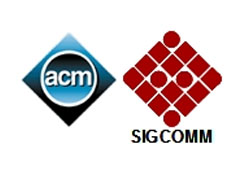IMDEA Networks

Insomnia in the Access or How to Curb Access Network Related Energy Consumption

Eduard Goma, Telefónica Research; Marco Canini, EPFL; Alberto Lopez Toledo, Telefónica Research; Nikolaos Laoutaris, Telefónica Research; Dejan Kostic, EPFL; Pablo Rodriguez, Telefónica Research; Rade Stanojević, Institute IMDEA Networks; Pablo Yagüe Vale
External Presentation (IN Speaker)
Access networks include modems, home gateways, and DSL Access Multiplexers (DSLAMs), and are responsible for 70-80% of total network-based energyconsumption. In this paper I’ll take an in-depth look at the problem of greeningaccess networks, identify three root problems, and propose practical solutionsfor their user- and ISP-parts. On the user side, the combination of continuous light traffic and lack of alternative paths condemnsgateways to being powered most of the time despite having Sleep-on-Idle (SoI) capabilities. To address this problem, we introduce Broadband Hitch-Hiking(BH2), that takes advantage of the overlap of wireless networks to aggregate user traffic in as few gateways as possible. In current urban settings BH2can power off 65-90% of gateways. Powering off gateways permits the remaining ones to synchronize at higher speeds due to reduced crosstalk from havingfewer active lines. Our tests reveal speedup up to 25%. On the ISP side, we propose introducing simple inexpensive switches at the distribution frame forbatching active lines to a subset of cards letting the remaining ones sleep. Overall, our results show an 80% energy savings margin in access networks.The combination of BH2 and switching gets close to this margin, saving up to 69%.
 Descargar la publicación (966 Kb)
Descargar la publicación (966 Kb)
- Localización: ACM Special Interest Group on Data Communication Annual Conference on the applications, technologies, architectures, and protocols for computer communication (ACM SIGCOMM 2011), Toronto, Ontario (Canada)
- Organización: NETCOM Research Group (Telematics Department, University Carlos III of Madrid, Spain); Institute IMDEA Networks (Madrid, Spain)
- Hora: 09:00am
- Add to Calendar: iCalendar Outlook Google

